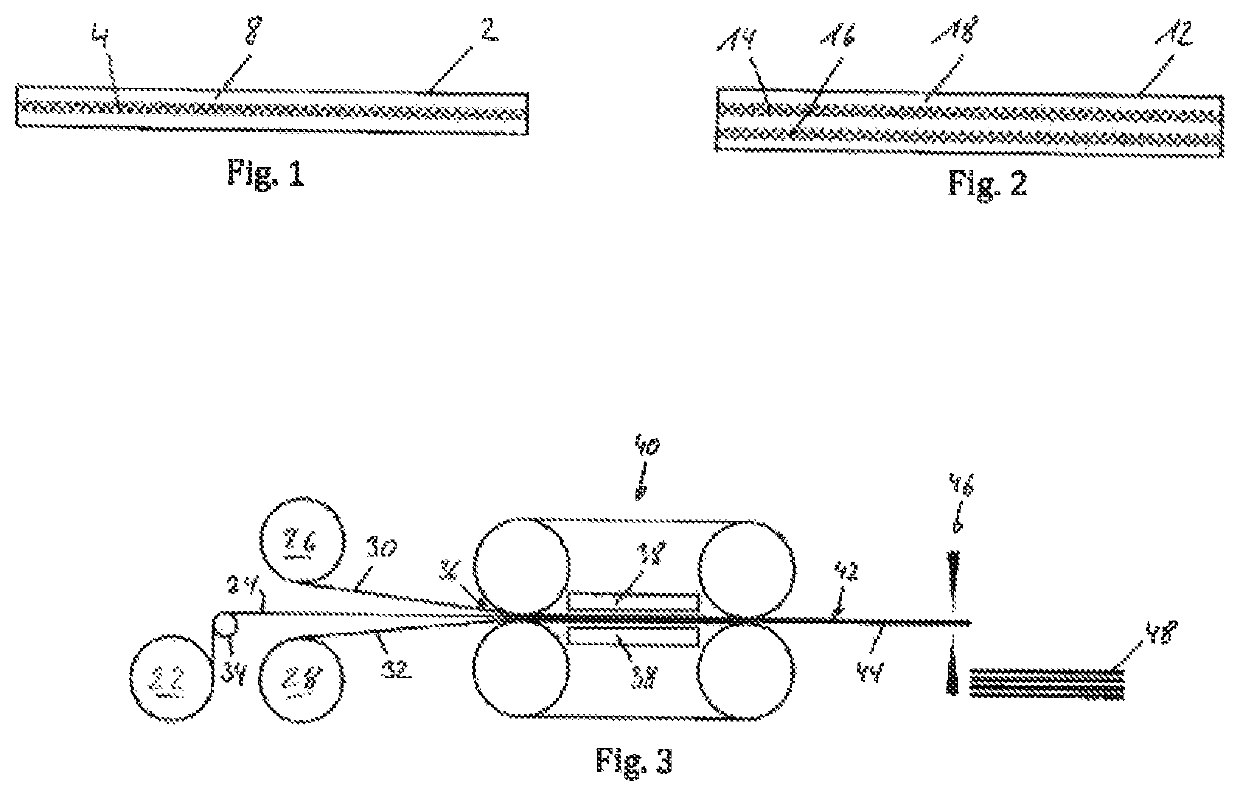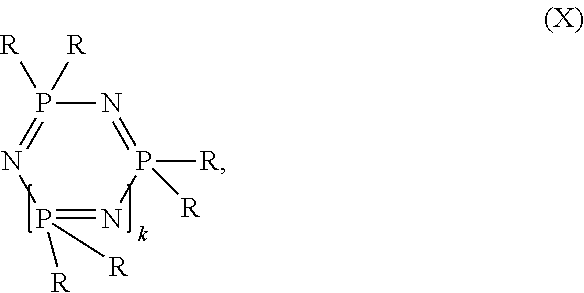Fiber composite material, use therefor, and method for the production thereof
a composite material and fiber technology, applied in the field of fiber composite materials, can solve the problems that composite sheets known from the prior art which still meet less demanding fire protection requirements cannot be used, and composite sheets are therefore not allowed to be used, so as to achieve good smoke evolution and mechanical properties
- Summary
- Abstract
- Description
- Claims
- Application Information
AI Technical Summary
Benefits of technology
Problems solved by technology
Method used
Image
Examples
examples
[0253]The following examples serve to illustrate the invention in respect of the composition of the matrix:
Component A1
[0254]Linear polycarbonate based on bisphenol A and having a relative solution viscosity of ηrel=1.28, measured in CH2Cl2 as solvent at 25° C. and a concentration of 0.5 g / 100 ml, or linear polycarbonate based on bisphenol A and having a weight average molecular weight Mw of 27 500 g / mol (measured by GPC in dichloromethane using polycarbonate as standard).
Component A2
[0255]Linear polycarbonate based on bisphenol A and having a relative solution viscosity of ηrel=1.20, measured in CH2Cl2 as solvent at 25° C. and a concentration of 0.5 g / 100 ml, or linear polycarbonate based on bisphenol A and having a weight average molecular weight Mw of 20 000 g / mol (measured by GPC in dichloromethane using polycarbonate as standard).
Component B.1
[0256]ABS graft polymer having a core-shell structure and prepared by emulsion polymerization of 43% by weight, based on the ABS polymer,...
PUM
| Property | Measurement | Unit |
|---|---|---|
| particle size d50 | aaaaa | aaaaa |
| thickness | aaaaa | aaaaa |
| thicknesses | aaaaa | aaaaa |
Abstract
Description
Claims
Application Information
 Login to View More
Login to View More - R&D
- Intellectual Property
- Life Sciences
- Materials
- Tech Scout
- Unparalleled Data Quality
- Higher Quality Content
- 60% Fewer Hallucinations
Browse by: Latest US Patents, China's latest patents, Technical Efficacy Thesaurus, Application Domain, Technology Topic, Popular Technical Reports.
© 2025 PatSnap. All rights reserved.Legal|Privacy policy|Modern Slavery Act Transparency Statement|Sitemap|About US| Contact US: help@patsnap.com



